Evidence and Liability in Semi-Truck Accidents
The intricate nature of semi-truck accidents presents a unique challenge in determining liability, necessitating a thorough and sophisticated approach to evidence gathering. As these accidents often result in severe consequences, understanding the nuances of evidence, from the initial collection at the crash site to the detailed analysis that follows, becomes paramount. This exploration not only sheds light on the importance of methodical evidence compilation but also on how such evidence can pivot the direction of legal outcomes. As we navigate through the complexities of establishing fault, it becomes evident that the path to justice in such cases is fraught with obstacles. This conversation invites a closer examination of the strategies that can effectively surmount these challenges, thereby underscoring the critical role of evidence in the adjudication of semi-truck accident claims.

Key Takeaways
- Determining liability in truck accidents relies on proving negligence through evidence collection.
- Key evidence includes police reports, witness statements, and truck-specific data like logbooks and black box recordings.
- Multiple parties can be liable, including truck drivers, trucking companies, and shippers or manufacturers.
- Free and accessible resources like police reports and FMCSA regulations are crucial for supporting truck accident claims.
Importance of Evidence
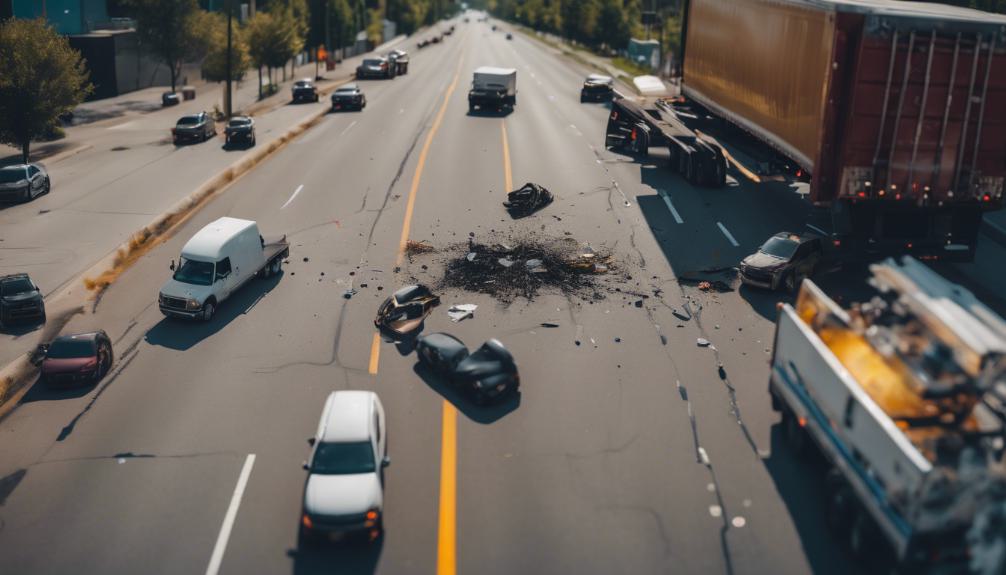
In the aftermath of semi-truck accidents, the collection and analysis of evidence play a pivotal role in determining liability and securing justice for all parties involved. The complexity of these incidents often involves multiple factors, including vehicle mechanics, driver conduct, and road conditions, making thorough evidence gathering essential. Immediate reporting and detailed documentation of the scene, alongside witness interviews and medical consultations, form the backbone of an effective investigation. Engaging an attorney early can further enhance the evidence collection process, providing access to specialized resources like logbook analysis, black box data, and maintenance records. Common types of evidence include police reports, photographs, phone records, and medical documents. These elements combined offer a all-encompassing view of the circumstances surrounding the accident, facilitating a fair and accurate determination of liability.
Fatalities and Statistics
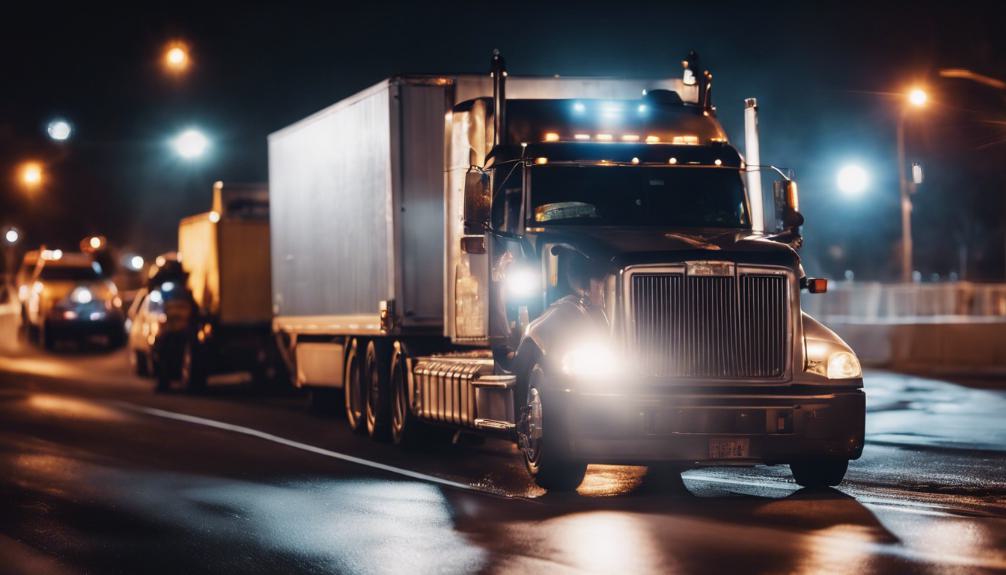
Understanding the gravity of semi-truck accidents requires a close examination of fatalities and statistical data. In 2020, large truck collisions accounted for 4,842 fatalities, underscoring the substantial risks these vehicles pose on the road. This figure not only represents a significant human loss but also highlights the critical need for stringent safety measures and regulations. The high number of fatalities associated with semi-truck accidents emphasizes the importance of thorough investigations and evidence collection in determining the cause and, subsequently, the liability. Each statistic is a reminder of the potential consequences of negligence and the imperative to enforce and adhere to safety standards to prevent future tragedies.
Determining Liability
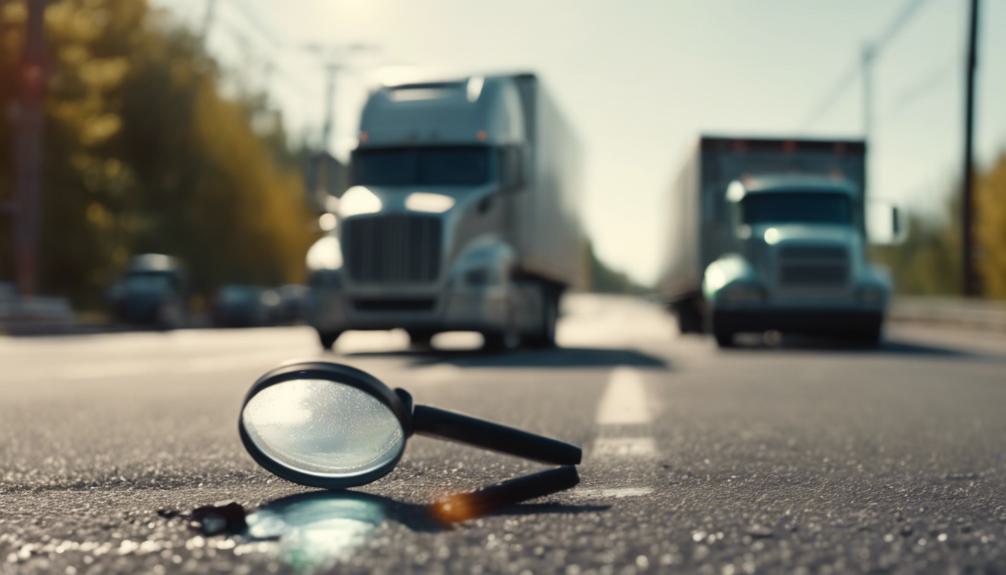
Determining liability in semi-truck accidents is a complex process that hinges on establishing negligence through meticulous evidence collection and analysis. This involves identifying which party failed to exercise the reasonable care expected under the circumstances. Given the heavy regulations governing the trucking industry, the scope for negligence can span from the driver's actions to the trucking company's operational procedures. For instance, a driver may be found negligent for not adhering to driving hours regulations, while a trucking company might be liable for failing to maintain vehicles properly. Additionally, other parties such as cargo loaders or manufacturers could hold responsibility if their actions contributed to the accident. Establishing clear liability requires a thorough understanding of federal and state regulations, as well as the specific dynamics of the incident in question.
Compiling Accident Evidence

Gathering thorough evidence following a semi-truck accident is a critical step in establishing the facts and determining liability. The challenging nature of large truck accidents, which resulted in 4,842 fatalities in 2020 alone, underscores the importance of meticulous evidence collection. Compiling detailed evidence is essential to ascertain liability accurately. This involves gathering common lawsuit evidence such as police reports, scene photographs, phone records to indicate distractions, witness statements, and medical records documenting injuries. Additionally, semi-truck accidents necessitate the collection of specific evidence like logbook details, receipt cross-referencing, black box and dash camera data, along with inspection and maintenance records. Such evidence plays a pivotal role in constructing a robust case by illuminating the circumstances surrounding the accident and pinpointing responsibility.
Effective Investigation Steps

To guarantee a thorough investigation of a semi-truck accident, it is important to follow a structured set of steps, starting with immediate reporting of the incident to the relevant authorities. Prompt action guarantees that essential evidence is preserved and that an accurate record of events is established from the outset. Following the initial report, detailed documentation of the accident scene, including photographs and sketches, should be undertaken. This step is critical in capturing the physical context in which the accident occurred. Subsequently, conducting interviews with witnesses provides firsthand accounts that can corroborate or clarify the documented evidence. Securing medical consultations early on not only supports the health and recovery of those involved but also provides expert insights into the injuries sustained, further contributing to the body of evidence. Lastly, seeking attorney assistance in gathering and analyzing all collected evidence ensures a thorough approach to establishing liability and pursuing justice.
Common Lawsuit Evidence

In legal disputes arising from semi-truck accidents, the collection of relevant evidence is pivotal to establishing the facts and determining liability. Given the complexity and potentially devastating outcomes of such incidents, which resulted in 4,842 fatalities in 2020 alone, an accurate and thorough evidence compilation is vital. Common types of lawsuit evidence include police reports, which provide an official account of the accident, photographs of the scene showing immediate post-accident conditions, phone records to establish any distractions at the time of the accident, witness statements offering varied perspectives on the event, and medical records detailing the injuries sustained. This evidence forms the foundation of a compelling case, supporting claims of negligence and liability among the parties involved.
Specific Semi-Truck Evidence

Specific evidence unique to semi-truck accidents plays an important role in unraveling the complexities of these cases and determining liability accurately. The detailed examination of logbook entries can reveal essential information about a driver's hours on the road, potentially indicating fatigue-related negligence. Receipt cross-referencing offers insights into a truck's route and timeline, providing context for the accident. Black box and dash camera data serve as objective witnesses, capturing the truck's speed, braking patterns, and moments leading up to the collision. Inspection and maintenance records are critical for identifying any neglect in the truck's upkeep, which can directly contribute to accidents. Additionally, digital communications and testing records can expose risky behaviors or compliance issues, further clarifying the circumstances of the incident.
Parties in Truck Accidents

Identifying the responsible parties in a truck accident is a complex process, involving multiple stakeholders such as the trucking company, the driver, and possibly the shipper or manufacturer. Each of these entities plays a distinct role in the logistics and operation of trucking, which can influence the dynamics of an accident. The trucking company, for instance, may face scrutiny for its operational practices, including the maintenance of vehicles and the enforcement of driving schedules. Drivers are evaluated based on their adherence to traffic laws and the handling of the vehicle at the time of the incident. Additionally, shippers or manufacturers could be implicated if the nature of the cargo contributed to the accident's severity. This intricate web of relationships necessitates a thorough investigation to ascertain the exact contributions of each party to the incident.
Negligence and Liability
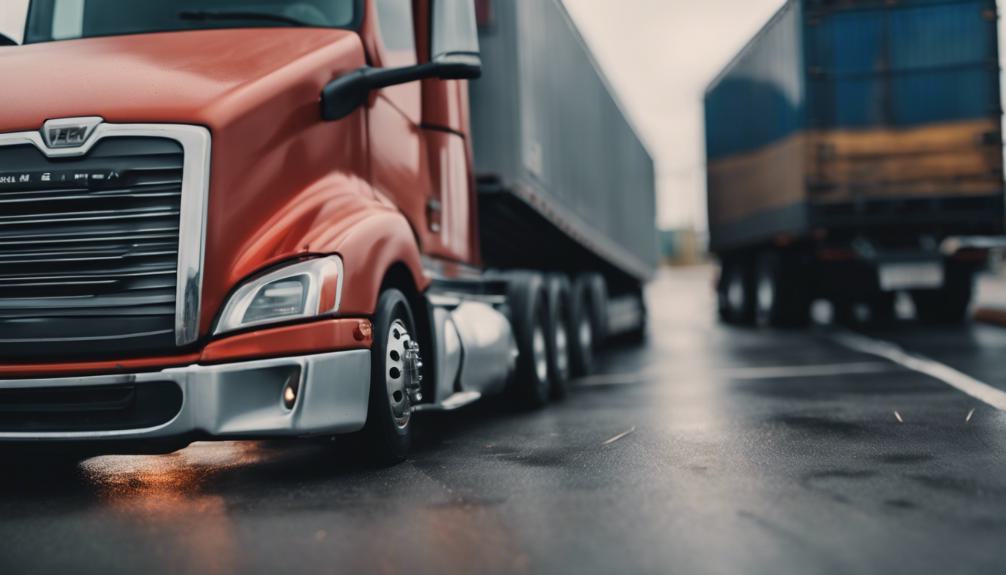
Understanding the concept of negligence is fundamental to establishing liability in truck accident cases. Negligence, in legal terms, refers to the failure to exercise the level of care that a reasonably prudent person would under similar circumstances. In the context of truck accidents, this can manifest in various ways, such as a driver's failure to adhere to traffic laws, a trucking company's neglect in maintaining vehicles, or a manufacturer's oversight in ensuring the safety of parts. Determining who was negligent and therefore liable involves a thorough investigation of the circumstances surrounding the accident, including the actions of all parties involved. Establishing negligence is important because it directly influences the outcome of claims for damages and compensation.
Evidence Gathering Strategies
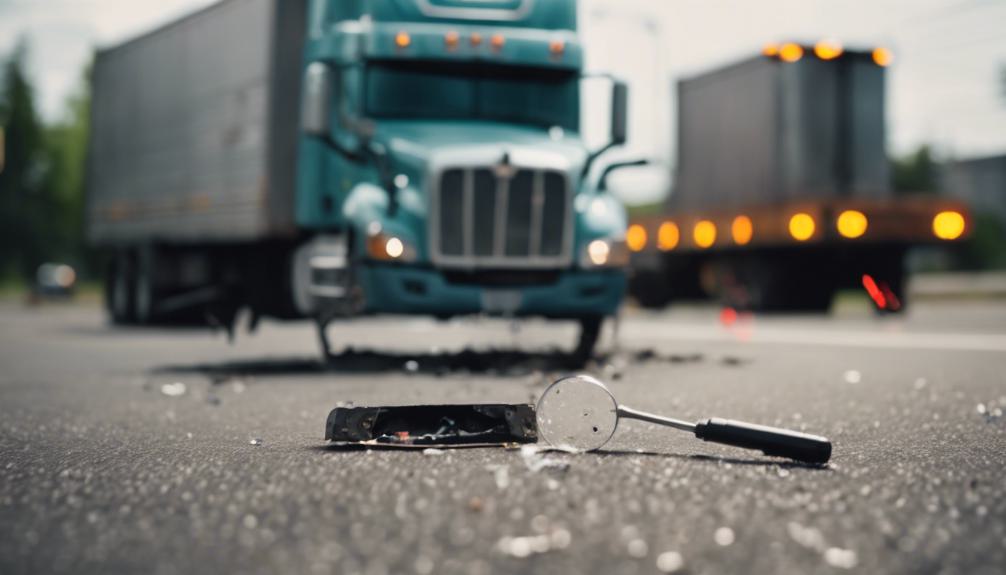
After establishing negligence in truck accident cases, the next step involves implementing effective evidence gathering strategies to support claims and determine liability. This process is critical, given the complexity of large truck accidents and the devastating outcomes they often entail, such as the 4,842 fatalities reported in 2020. A thorough investigation necessitates immediate reporting of the accident, detailed documentation of the scene, conducting witness interviews, securing medical consultations, and seeking attorney assistance in evidence collection. Among the most common types of evidence are photographs of the accident scene, phone records to establish any distractions, witness statements, medical records detailing injuries, along with specific semi-truck data including logbook details, black box and dash camera footage, and inspection and maintenance records. This exhaustive approach guarantees all angles are covered in establishing liability and supporting the victim's claim.
Utilizing Police Reports

Obtaining a police report is a critical first step in compiling evidence for truck accident claims, providing an official account of the incident's circumstances and involved parties. These reports offer an important perspective from law enforcement officers who assessed the scene firsthand. They contain essential information such as the date, time, and location of the accident, descriptions of the vehicles involved, statements from witnesses, and any citations issued. This documentation can be pivotal in establishing fault and supporting claims of negligence. Legal professionals often rely on police reports to build a thorough narrative of the event, as these documents lay the groundwork for further investigation. Ensuring the accuracy and thoroughness of the police report is essential for effectively utilizing it in legal proceedings.
FMCSA Regulations Research
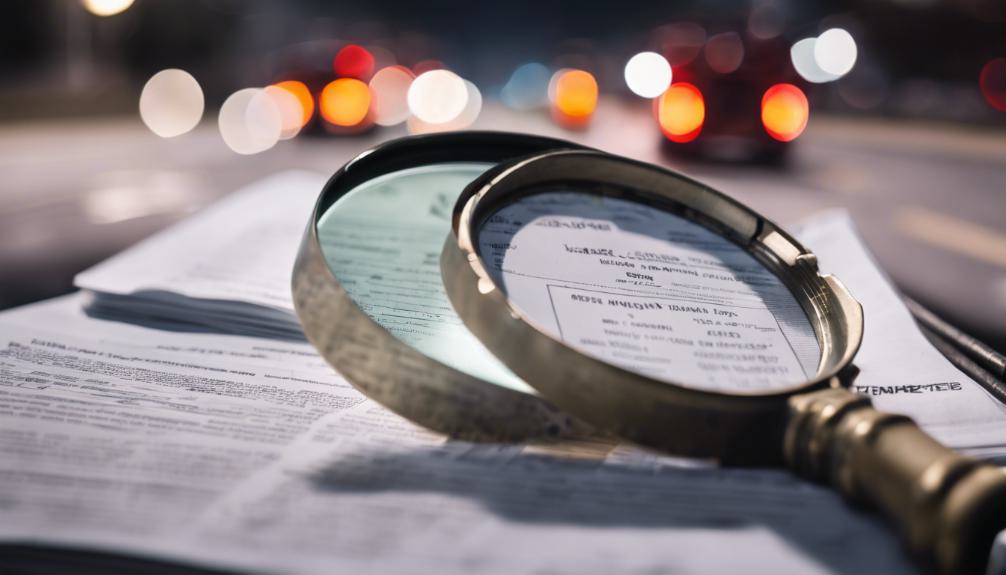
Exploring FMCSA regulations offers an in-depth look into federally mandated safety and operational standards for the trucking industry, essential for establishing compliance and liability in accident claims. The Federal Motor Carrier Safety Administration (FMCSA) sets forth guidelines that govern hours of service, vehicle maintenance, driver qualifications, and more. These regulations are fundamental in determining whether a trucking company or driver has adhered to the required safety protocols. In the event of an accident, demonstrating a violation of FMCSA rules can greatly impact the outcome of a claim. It highlights negligence on the part of the driver or trucking company, thereby influencing liability determinations. Understanding these regulations is vital for legal professionals and claimants alike to build a compelling case after a semi-truck accident.
Resources for Truck Claims

Several invaluable resources are available to individuals pursuing truck accident claims, offering critical information and support needed to build a strong case. Accessing police reports provides direct insights from the accident scene, serving as a foundational piece of evidence. The Federal Motor Carrier Safety Administration (FMCSA) regulations offer a thorough understanding of trucking laws and safety standards, critical for identifying violations. Insurance Information Institute statistics can bolster a claim with data on highway safety and trucking accidents. Additionally, online platforms and legal websites like Expertise.com present guides and articles on handling truck accident claims, from identifying common types of commercial truck accidents to understanding insurance coverage specifics. These resources collectively facilitate a robust approach to evidence gathering and claim substantiation.
Liability and Evidence Recap

Understanding liability and the careful gathering of evidence are foundational aspects of managing truck accident claims successfully. The complexity inherent in truck accidents necessitates a thorough investigation to determine who is at fault—be it the driver, trucking company, or another party. This process involves collecting extensive evidence, such as police reports, photographs of the scene, witness statements, and medical records, to support claims of negligence. Additionally, semi-truck accidents require examining specific evidence like logbook details, black box data, and maintenance records. Effective evidence gathering not only helps in establishing liability but also in substantiating the impact of the accident on victims' lives, making it a critical step in securing a fair resolution of truck accident claims.
Frequently Asked Questions
How Does Weather or Road Conditions Impact the Determination of Liability in Semi-Truck Accidents?**
Weather or road conditions can greatly impact liability determinations in semi-truck accidents by influencing the perceived negligence of involved parties. Adverse conditions necessitate higher care levels, affecting how fault is assessed in such incidents.
This Question Delves Into How External Factors Like Weather (Snow, Rain, Fog) or Road Conditions (Potholes, Construction Zones) Influence the Assignment of Fault in the Event of a Truck Accident, Which Is Not Typically Covered in Standard Discussions of Evidence and Liability.
External factors such as weather conditions and road states greatly impact the determination of liability in truck accidents by influencing the driver's ability to operate safely and adhere to standard driving practices.
Can Social Media Posts Be Used as Evidence in Semi-Truck Accident Lawsuits?**
In semi-truck accident lawsuits, social media posts can indeed be utilized as evidence, providing insights into behaviors or conditions relevant to the case. With 4,842 fatalities involving large trucks in 2020, every piece of evidence is essential.
This Question Explores the Role of Digital Footprints, Such as Social Media Posts or Statuses, in Building a Case or Establishing Timelines and Behaviors Before the Accident.
The current inquiry examines how digital footprints, including social media posts or statuses, contribute to case development or in delineating timelines and behaviors preceding an incident, independent of specific contexts like evidence and liability in accidents.
How Do Semi-Truck Accident Claims Proceed if the Truck Driver Is an Independent Contractor Versus an Employee of a Trucking Company?**
When a semi-truck driver is an independent contractor, liability in accident claims can differ notably from cases where the driver is an employee of a trucking company, affecting the strategy for pursuing compensation.
Conclusion
In summary, the meticulous collection and analysis of evidence play a pivotal role in the intricate process of determining liability in semi-truck accidents. The investigation into such incidents, supported by thorough evidence compilation, including police reports and adherence to FMCSA regulations, ultimately reveals the multifaceted nature of negligence. This rigorous approach not only elucidates the responsibilities of various stakeholders but also underscores the indispensable value of evidence in establishing fault. Consequently, this evidentiary foundation is critical for the equitable resolution of truck accident claims, thereby upholding the principles of justice and accountability.

This post has been generated by AI and was not reviewed by editors. This is Not legal advice. Please consult with an attorney.

![How Much Will A Truck Accident Lawsuit Cost? [2024] 48 truck accident lawsuit expenses](https://lawsuitlegit.com/wp-content/uploads/2024/03/truck_accident_lawsuit_expenses-150x150.jpg)


